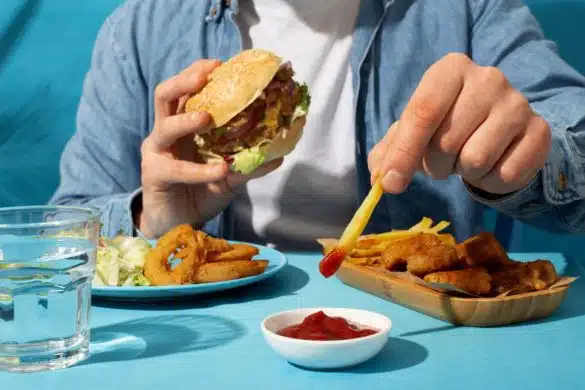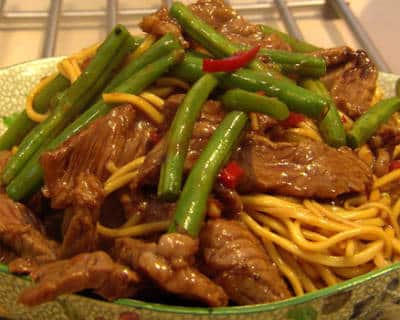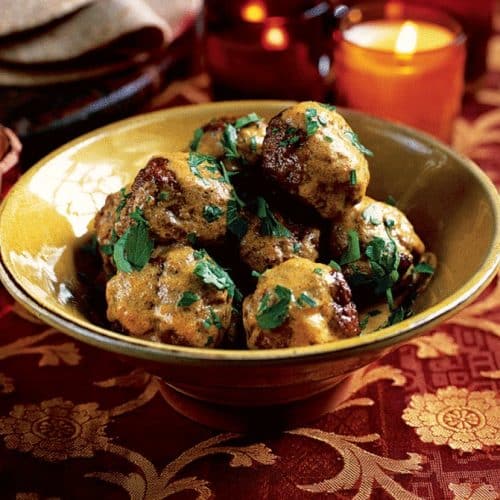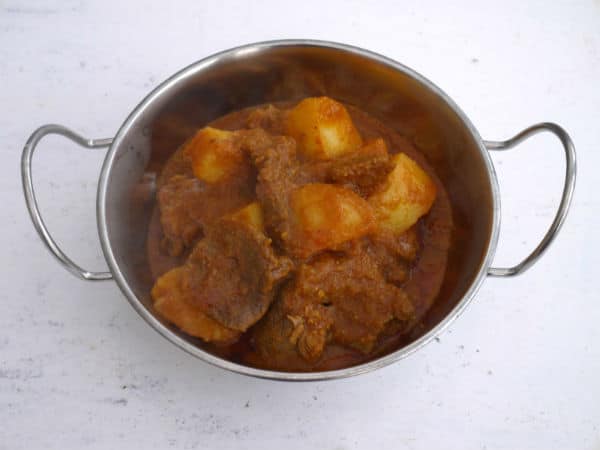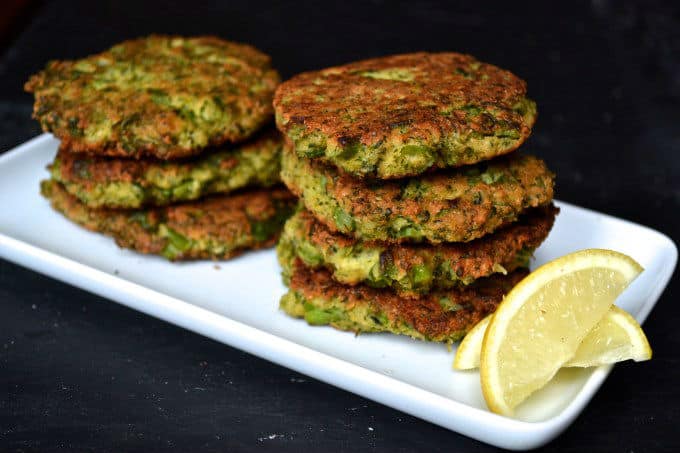Key Highlights
- The glycemic index (GI) is a scale that ranks carbohydrate-containing foods by how much they raise your blood sugar levels.
- Following a low-GI diet involves choosing foods that are digested slowly, preventing sudden spikes in blood sugar.
- For individuals with diabetes mellitus, this eating style can lead to better blood sugar control.
- A low GI diet can also support weight management and reduce the risk of heart disease.
- Many delicious and nutritious foods, including fruits, vegetables, and whole grains, have a low GI value.
If you’re living with diabetes mellitus, every meal can feel like a balancing act; eat the wrong food, and your blood sugar may spike within minutes. That’s where the glycemic index (GI) becomes a game-changer.
The glycemic index is a rating system for foods containing carbohydrates that shows how quickly each food affects your blood sugar (glucose) level when you eat it on its own. This understanding is crucial for following a diabetic diet, a low glycemic index approach.
The GI scale runs from 0 to 100, providing a clear way to compare different foods. Foods are assigned a GI value by comparing their effect to that of pure glucose, which has a GI value of 100. In this blog, we’ll break down how to use the GI smartly, which foods to trust, and which ones to avoid, so you can eat with confidence, not worry.
How Does GI Impact Your Blood Sugar?
Here’s how the Glycemic Index of any food impacts your blood sugar:
Low GI Foods (55 or less): Here’s what happens when you choose foods with a low glycemic index:
- Digested and absorbed slowly
- Lead to gradual, smaller rises in blood sugar
- Much easier for your body to manage
High GI Foods (70 or more): In contrast, high GI foods create a different response in your body:
- Break down quickly
- Cause rapid surges in glucose levels (“sugar spikes”)
- Followed by sharp drops in blood sugar
Want to keep your blood sugar steady? Explore these low glycemic index foods that rank among the top healthiest foods in the world for balanced nutrition.
Use this quick reference guide for making food choices:
| GI Category | GI Score | Food Examples |
| Low GI | 55 or less | Lentils, apples, raw carrots, whole-grain pasta, skim milk |
| Medium GI | 56-69 | Sweet corn, bananas, brown rice, oat breakfast cereals |
| High GI | 70 or more | White bread, white rice, baked potatoes, crackers, watermelon |
How Do You Identify Low Glycemic Index Foods?
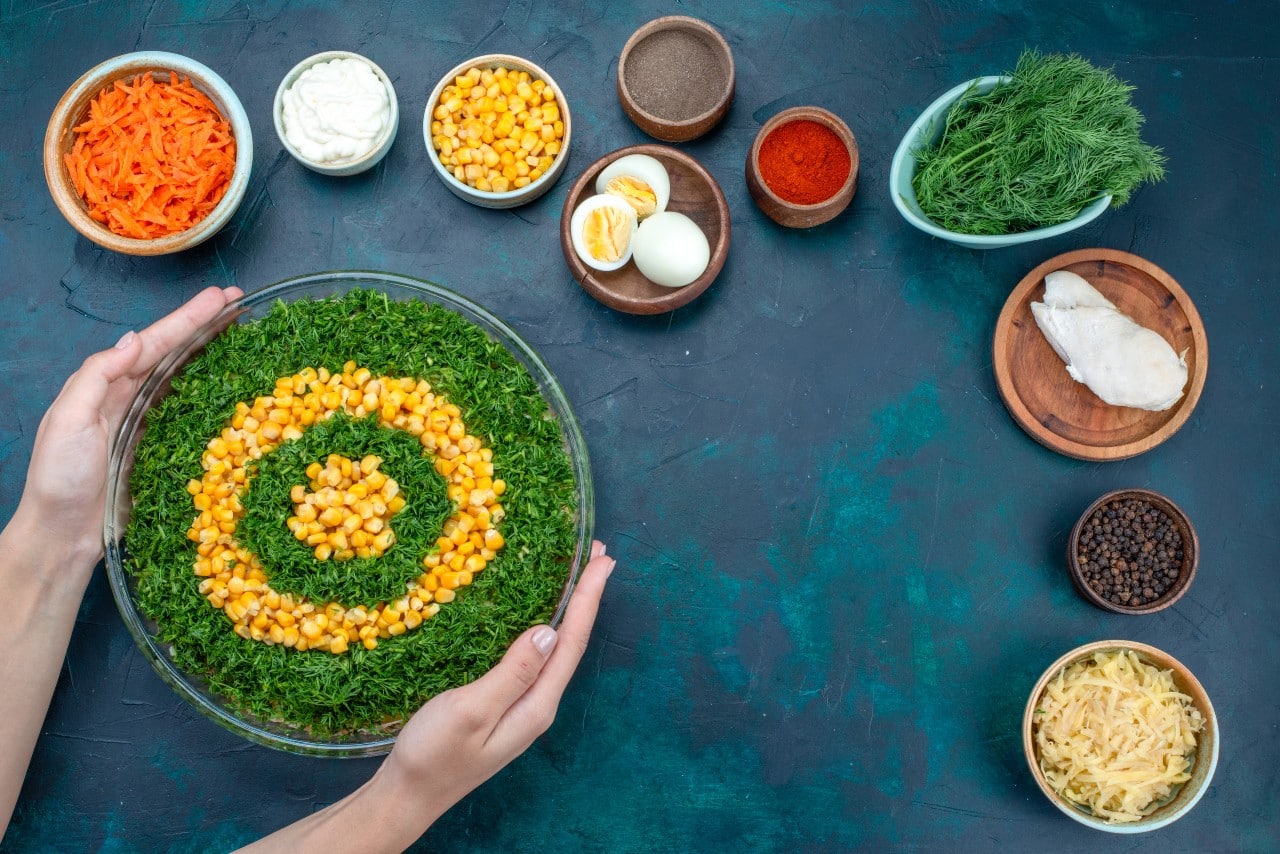
Low glycemic index foods for diabetics like eggs protien leafy greens and more
Let’s understand how the GI scale works and what factors can change a food’s score.
The GI Scale Breakdown:
Understanding these three categories will help you make informed food choices:
- Low GI: 55 or less
- Medium GI: 56-69
- High GI: 70 or higher
Factors That Influence GI Values:
Several key elements determine where a food falls on the glycemic index:
- Processing level – More processed = higher GI
- Type of sugar and starch structure
- Cooking methods
- Ripeness (for fruits)
- Food combinations – Adding protein or fat can lower the meal’s overall glycemic response
Craving Indian flavours but need to manage blood sugar? These 12 healthy Indian vegetarian dinner recipes make eating low-GI foods simple and delicious.
What Are the Best Low GI Foods to Include in Your Diet?
If you’re living with diabetes, the foods you choose can play a big role in managing your blood sugar. That’s why having a comprehensive list of low glycemic foods for diabetics can help you make smarter, more stable meal choices every day. With that in mind, here’s a list of low glycemic foods to guide your daily food choices.
1. Legumes (GI: 10-40)
Legumes are among the best low-glycemic food choices for diabetics. They’re rich in fibre, plant-based protein, and complex carbohydrates that digest slowly, helping maintain steady blood sugar levels. Regular consumption of legumes has been linked to improved glycemic control and reduced risk of type 2 diabetes complications.
Some of the best legumes for blood sugar management include:
- Lentils – Excellent in soups, stews, or salads. Their GI is around 29, and they offer both protein and iron.
- Chickpeas (Garbanzo beans) – With a GI of 28-33, chickpeas are perfect for curries, roasted snacks, or hummus.
- Kidney Beans – These have a GI of around 24-29 and work well in chilli, rice dishes, and casseroles.
- Black Beans – GI around 30. They’re great in burrito bowls, soups, or salads.
- Green Gram (Mung Beans) – With a GI of about 25-30, these are versatile in both sprouted and cooked forms.
Other good options include pinto beans, navy beans, split peas, adzuki beans, and fava beans, all of which fall into the low to medium GI range. For best results, cook them from scratch or choose low-sodium canned versions (rinsed thoroughly). Pairing legumes with whole grains or vegetables further supports balanced blood sugar levels.
2. Whole Grains (GI: 25-55)
Whole grains are nutrient-dense, fibre-rich alternatives to refined carbohydrates. They provide slow-releasing energy that helps stabilise blood sugar levels, making them an ideal choice for people managing diabetes. Regular inclusion of whole grains supports heart health, digestive balance, and long-term metabolic control.
Some of the best low to moderate-GI whole grains include:
- Barley – GI around 28. High in beta-glucan fibre that helps reduce cholesterol and improve insulin sensitivity.
- Quinoa – With a GI of about 35-45, it’s rich in protein and all nine essential amino acids.
- Whole-Grain Pasta – GI ranges from 32-50, providing sustained energy and better satiety than refined pasta.
- Steel-Cut Oats – GI around 42. Excellent for breakfast; slow digestion supports morning blood sugar stability.
- Brown Rice – A moderate-GI option at 50-55. Provides more fibre, vitamins, and minerals than white rice.
Other excellent options include bulgur, millet, amaranth, and whole-grain bread. For best results, pair these grains with vegetables or lean proteins to balance meals and improve glycemic response.
3. Most Vegetables (GI: 10-55)
Non-starchy vegetables are among the best low-GI foods to include in a diabetes-friendly diet. They are packed with vitamins, minerals, and antioxidants that support insulin function, heart health, and overall well-being. Their high fibre content slows glucose absorption, preventing spikes in blood sugar.
Some of the best low-GI vegetables include:
- Leafy Greens (Spinach, Kale, Lettuce) – GI around 15. Rich in magnesium and folate for metabolic health.
- Broccoli and Cauliflower – GI 10-15. Cruciferous vegetables with compounds that support detoxification and brain health.
- Peppers (Bell Peppers, Jalapeños) – GI about 20. Add colour, vitamin C, and antioxidants to meals.
- Raw Carrots – GI around 35. Provide beta-carotene and fibre for eye and skin health.
- Green Beans and Celery – GI 15-20. Excellent in soups, salads, or steamed dishes.
- Bitter Gourd (Karela) – GI near 18. Known for helping regulate blood glucose naturally.
- Okra (Ladyfinger) – GI around 20. Contains mucilage that supports smooth digestion and sugar control.
Other excellent vegetables include cabbage, zucchini, cucumber, and asparagus. For best results, steam, roast, or stir-fry them lightly to preserve nutrients and flavour.
4. Low-GI Fruits (GI: 25-55)
Fruits with a low glycemic index are naturally sweet yet gentle on blood sugar levels. They contain fibre, antioxidants, and essential vitamins that promote heart health, prevent oxidative stress, and sustain steady energy throughout the day.
Some of the best low-GI fruits include:
- Apples – GI around 36. High in soluble fibre and antioxidants for improved metabolism.
- Pears – GI 38. Provide vitamin C and keep you full longer.
- Berries (Strawberries, Blueberries) – GI 25-40. Rich in anthocyanins that enhance insulin sensitivity.
- Oranges – GI 40-45. Packed with vitamin C and hydration benefits.
- Peaches – GI 42. Contain polyphenols that support glucose regulation.
- Plums – GI 40. Low in calories and high in fibre.
- Grapefruit – GI around 25. Helps improve fat metabolism and glycemic control.
- Cherries – GI 22. Contain anthocyanins that reduce inflammation and protect blood vessels.
Other good choices include kiwi, apricots, and guava. For best results, eat whole fruits instead of juices to retain fibre and prevent glucose spikes.
5. Dairy Products (GI: 15-40)
Dairy products offer calcium, protein, and probiotics that support strong bones, gut health, and steady energy release. Most dairy foods have a low glycemic index, making them excellent additions to a diabetic diet when consumed in moderation.
Some low-GI dairy choices include:
- Milk – GI around 30. Provides protein and calcium to stabilise blood sugar and support muscle health.
- Plain Yoghurt – GI 35-40. Contains probiotics that improve digestion and insulin sensitivity.
- Cheese – GI close to zero. High in protein and healthy fats, it helps control hunger and balance glucose levels.
Other good options include Greek yoghurt, cottage cheese, and buttermilk. For best results, choose unsweetened and low-fat varieties to reduce added sugars and saturated fat intake.
6. Low-Glycemic Sweeteners for Diabetics
Replacing refined sugar with low-GI natural sweeteners can help manage blood glucose without compromising taste. These alternatives have minimal impact on insulin levels and are safe for moderate use in cooking or beverages.
Some of the best low-GI sweeteners include:
- Stevia – A natural plant-based sweetener with zero calories and no effect on blood sugar.
- Monk Fruit – Low-calorie, antioxidant-rich, and safe for diabetics; adds sweetness without glucose impact.
- Erythritol – A sugar alcohol with a GI of zero. Offers mild sweetness and minimal digestive discomfort when used in moderation.
Other suitable options include allulose and xylitol in limited amounts. For best results, use these sweeteners in moderation and avoid blends that contain added sugars or artificial ingredients.
Cooking for blood sugar control? Try these diabetic dinner recipes Indian style, that are tasty and smart.
What Are the Best Low Glycemic Snacks for Diabetics?
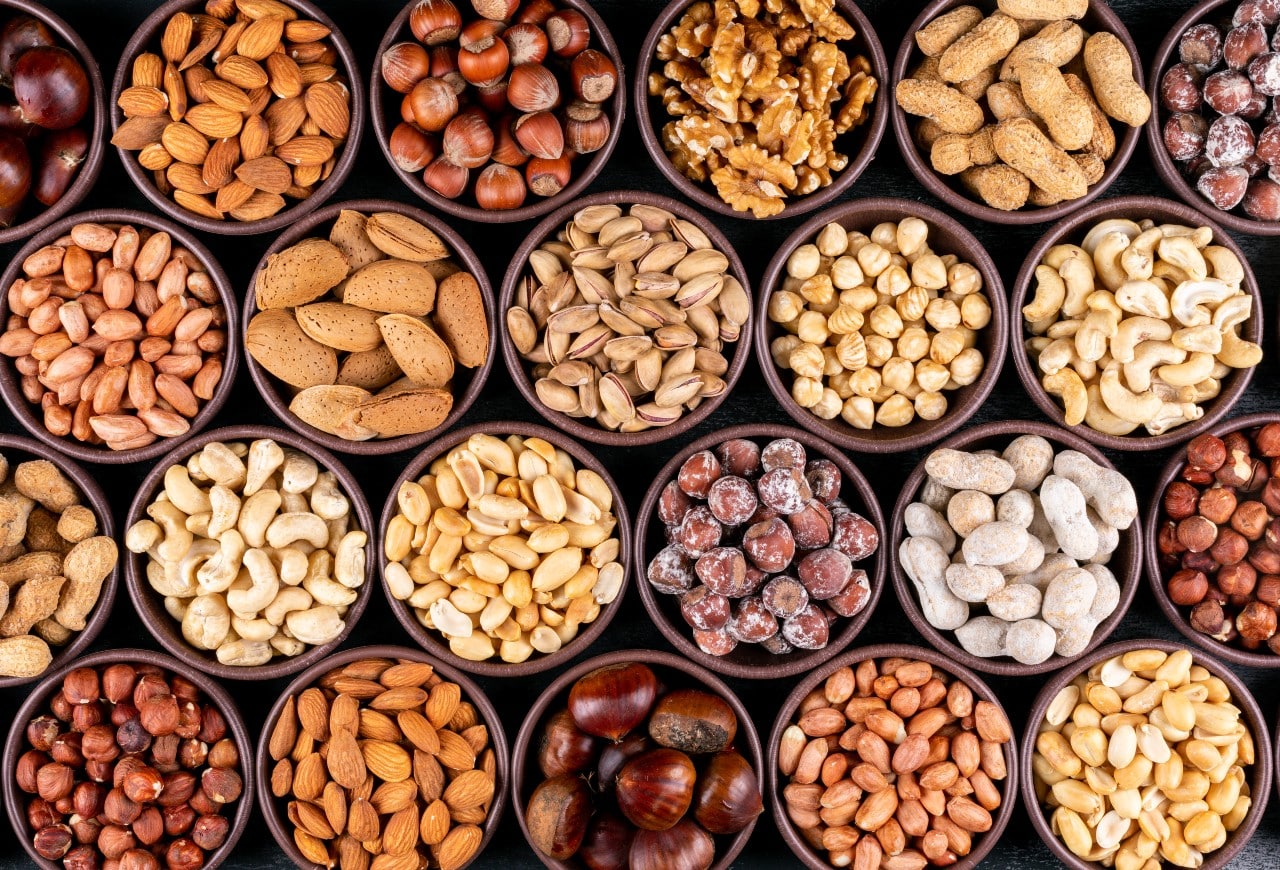
Healthy snacks for diabetics like pistachios almonds walnuts and pecans
Smart snacking is important to maintain stable blood sugar throughout the day. Here are healthy, low glycemic snacks for diabetics that won’t spike your glucose levels:
These portable snacks are perfect for busy schedules:
1. Roasted Chickpeas – Crunchy, High-Protein Snack
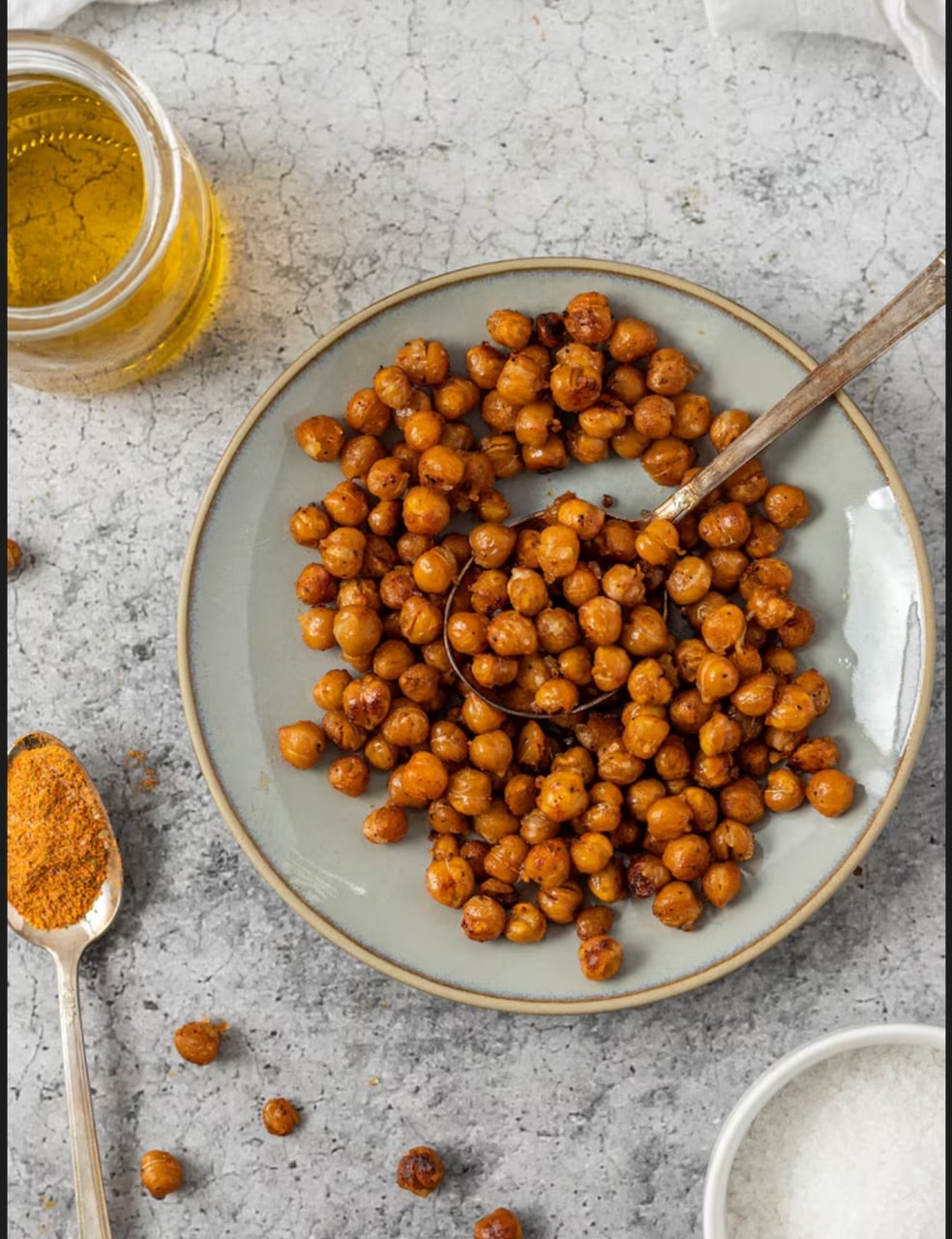
Roasted chickpeas in a plate
Roasted chickpeas are the perfect guilt-free swap for chips. Packed with plant protein, fibre, and crunch, they keep you full longer and stabilise blood sugar levels. Since chickpeas are low on the glycemic index, they release energy slowly, helping prevent sugar spikes and late-night cravings.
If you love crunchy snacks that actually nourish your body, try this quick roasted chickpea recipe.
Ingredients:
- 1 cup boiled chickpeas
- 1 teaspoon olive oil
- ½ teaspoon cumin powder
- A pinch of salt and paprika
Recipe:
- Pat chickpeas dry and toss evenly with spices and oil.
- Spread evenly on a tray and roast until golden crisp.
- Stir halfway through for even roasting and perfect crunchiness.
- Cool before serving to retain their signature crispy texture.
2. Raw Vegetable Sticks with Hummus – Fibre & Protein Power Snack
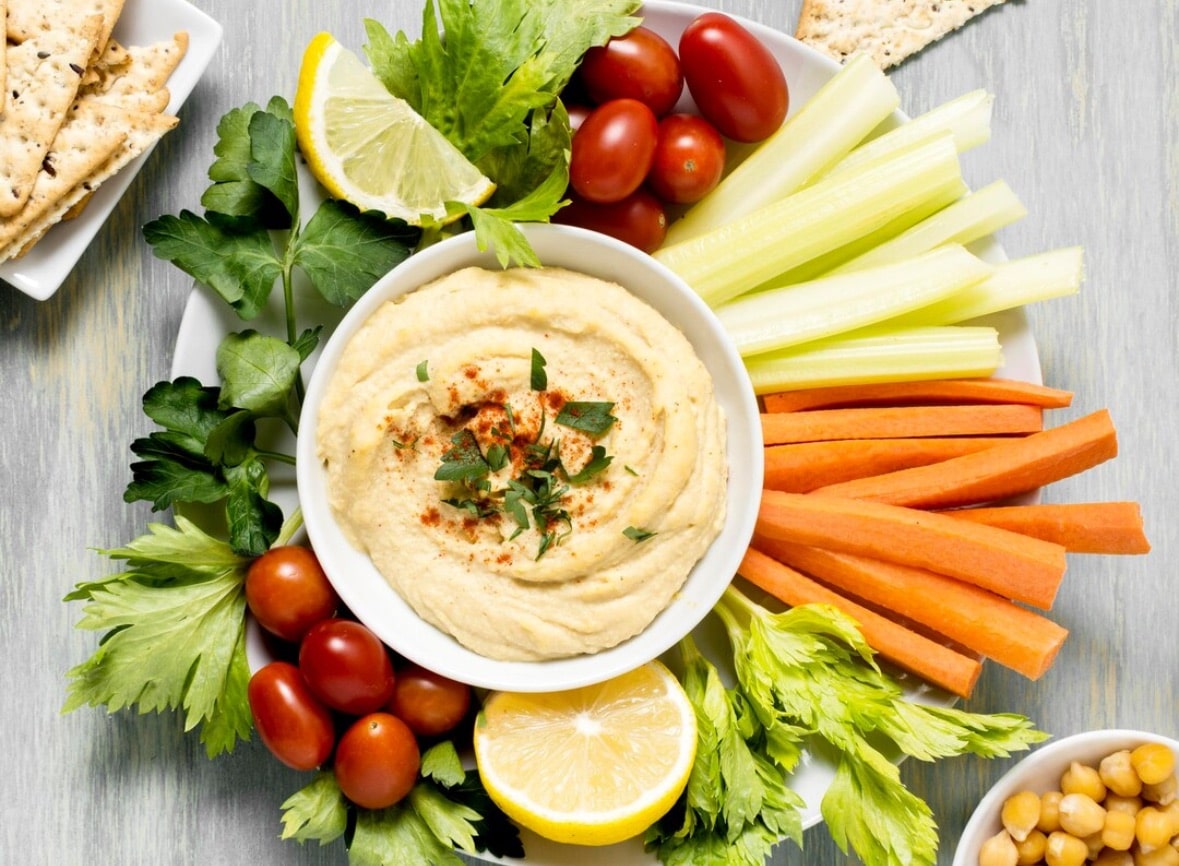
Raw veggie sticks with hummus
Raw veggies paired with hummus offer crunch, flavour, and long-lasting fullness. The fibre in vegetables and healthy fats in hummus make it a low-GI snack, keeping your energy steady while preventing sudden hunger. It’s refreshing, satisfying, and great for mindful snacking.
If you want a colourful and hydrating snack that supports digestion, this one’s for you.
Ingredients:
- 1 carrot, sliced into sticks
- 1 cucumber, sliced
- 1 bell pepper, sliced
- 3 tablespoons hummus
Recipe:
- Wash vegetables thoroughly and cut them into even sticks.
- Arrange colourful sticks neatly on a serving plate or board.
- Place hummus in a small bowl for easy dipping.
- Garnish hummus with olive oil and herbs before serving.
3. A Handful of Unsalted Nuts – Healthy Fats That Keep You Full
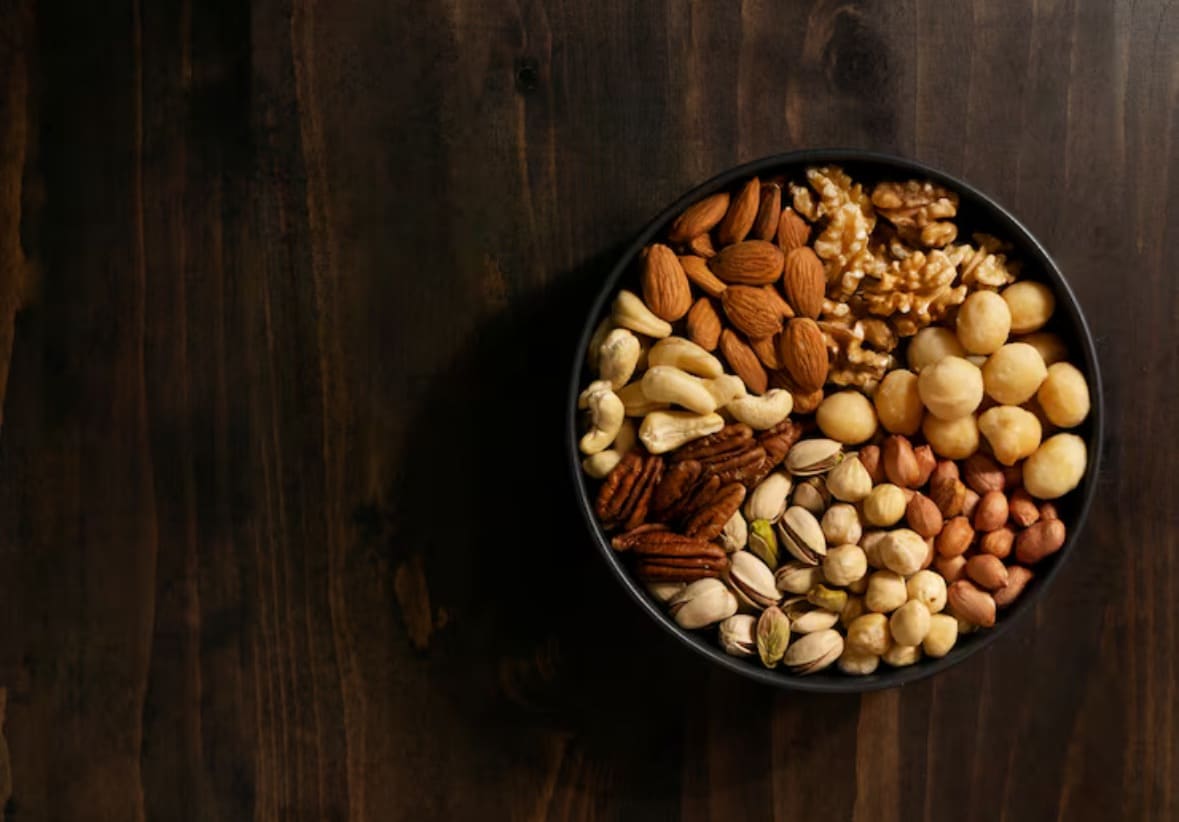
A handful of nuts in a bowl
Nuts like almonds, walnuts, and pistachios are full of protein, healthy fats, and magnesium, nutrients that stabilise energy and control appetite. As low-GI snacks, they help manage blood sugar levels, reducing your urge to snack later.
If you’re craving something crunchy yet balanced, this no-prep snack is unbeatable.
Ingredients:
- 5 almonds
- 3 walnuts
- 5 pistachios
Recipe:
- Combine almonds, walnuts, and pistachios in a small bowl.
- Lightly dry roast the nuts for extra aroma and crunch.
- Cool slightly before serving for perfect texture and taste.
- Enjoy them with green tea or warm milk for relaxation.
4. Greek Yoghurt with Berries – Creamy & Antioxidant-Rich Snack
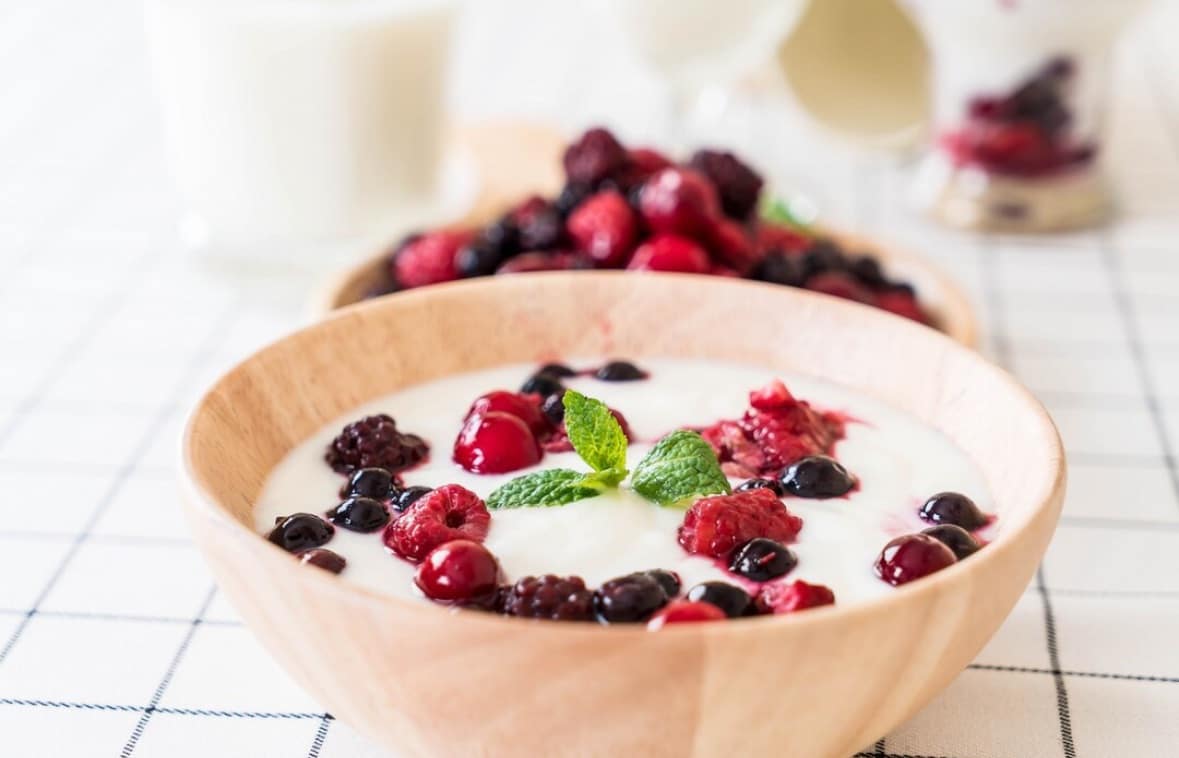
Greek yoghurt with berries
Greek yoghurt and berries make a naturally sweet, high-protein, low-GI snack that satisfies dessert cravings without spiking blood sugar. The yoghurt’s protein balances the berry’s natural sugars, keeping you full longer while nourishing your gut.
If you’re craving a sweet treat that’s still wholesome, this one’s perfect.
Ingredients:
- ½ cup plain Greek yoghurt
- ¼ cup mixed berries
- 1 teaspoon honey (optional)
Recipe:
- Spoon Greek yoghurt evenly into a small chilled serving bowl.
- Add fresh or frozen berries gently on top of yoghurt.
- Drizzle honey if desired for extra sweetness and flavour.
- Chill briefly before serving for a creamy, cool texture.
5. Boiled Eggs – Simple Protein Snack for Lasting Fullness
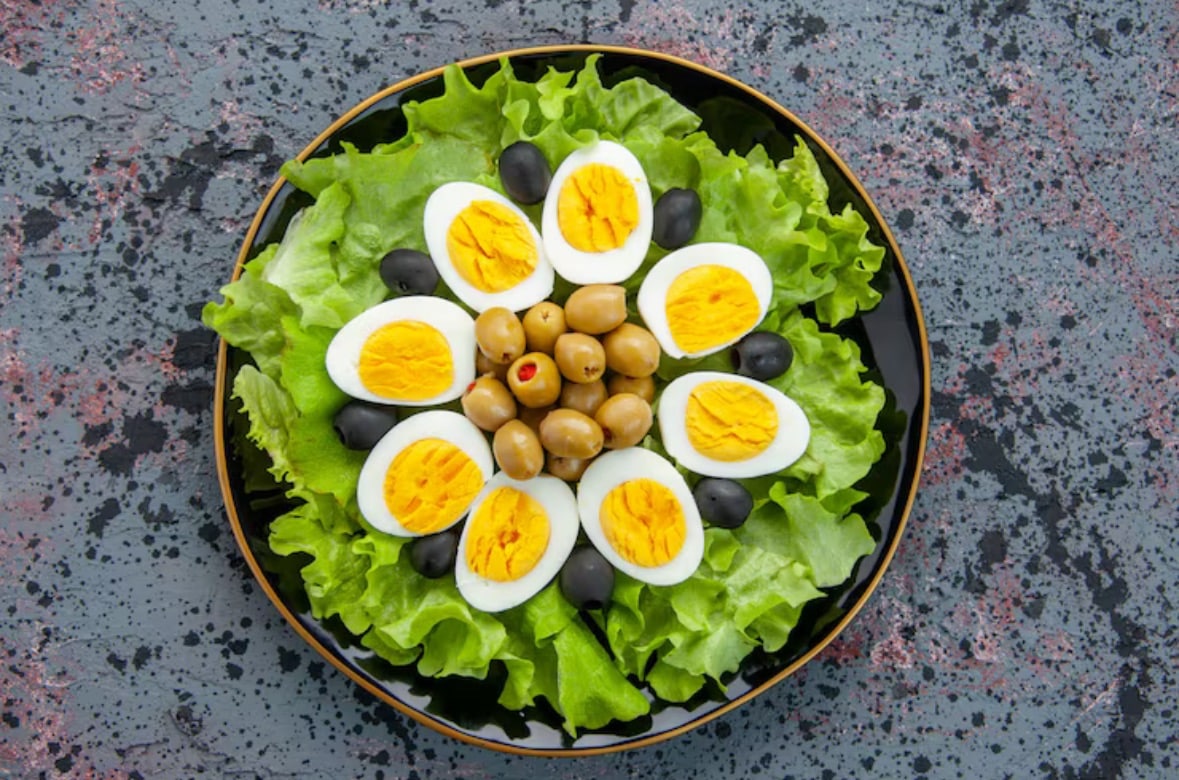
Hard boiled eggs
Boiled eggs are rich in protein, choline, and good fats that sustain energy and support brain health. Being naturally low on the glycemic index, they keep your blood sugar steady and help prevent cravings long after eating.
If you’re looking for a no-fuss, protein-rich snack, eggs are your go-to.
Ingredients:
- 2 eggs
- Salt and pepper to taste
Recipe:
- Place eggs in water and bring gently to a boil.
- Simmer for 10 minutes until fully hard-boiled and firm.
- Remove, cool slightly, and peel carefully under running water.
- Slice, season lightly, and serve warm or chilled anytime.
6. Cottage Cheese with Cucumber Slices – Light & Refreshing Snack
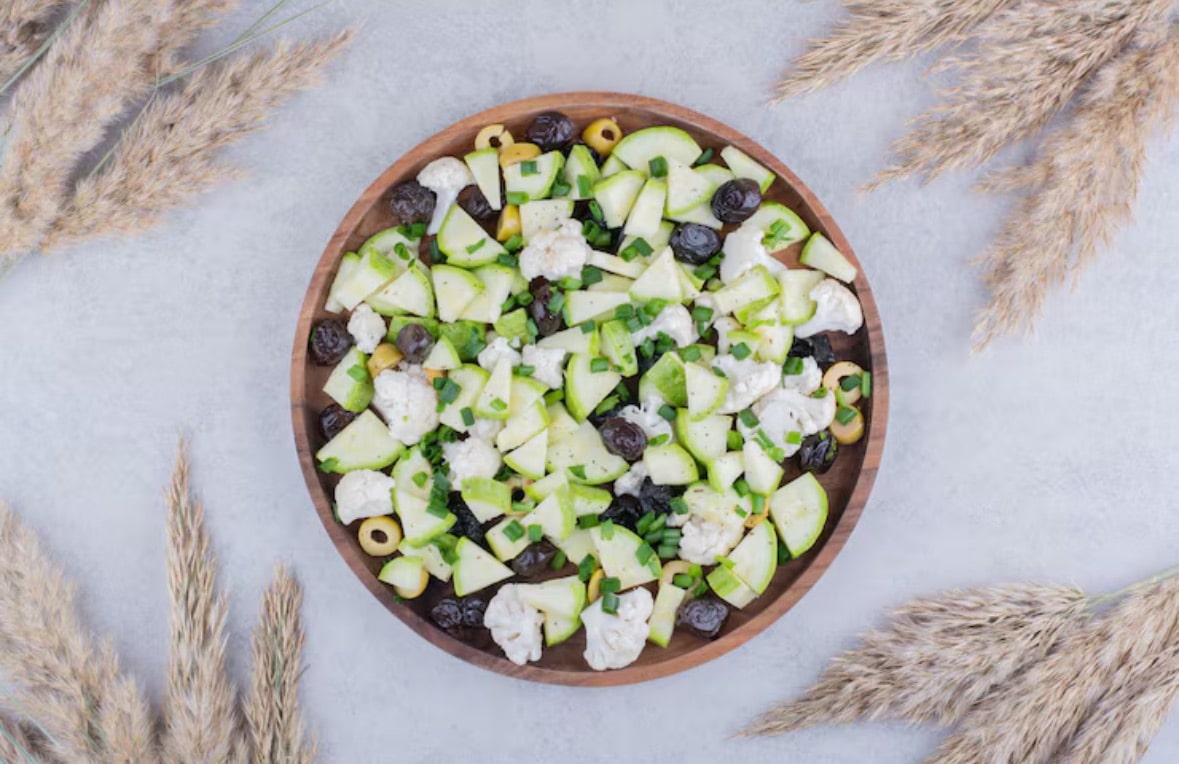
cottage cheese with cucumber slices
This cooling combo provides protein, calcium, and hydration, perfect for late-evening hunger. Both cottage cheese and cucumbers are low-GI foods, offering sustained energy and satiety without raising blood sugar.
If you prefer savoury snacks that feel light but nourishing, this combo is ideal.
Ingredients:
- ½ cup cottage cheese cubes
- ½ cucumber, sliced
- A dash of black pepper and lemon juice
Recipe:
- Slice cucumbers evenly and arrange them neatly on a plate.
- Place a cube of cottage cheese on each cucumber slice.
- Sprinkle crushed pepper evenly over the assembled bites.
- Finish with lemon juice for brightness and a tangy touch.
7. Apple Slices with Almond Butter – Sweet, Fibre-Filled Energy Snack
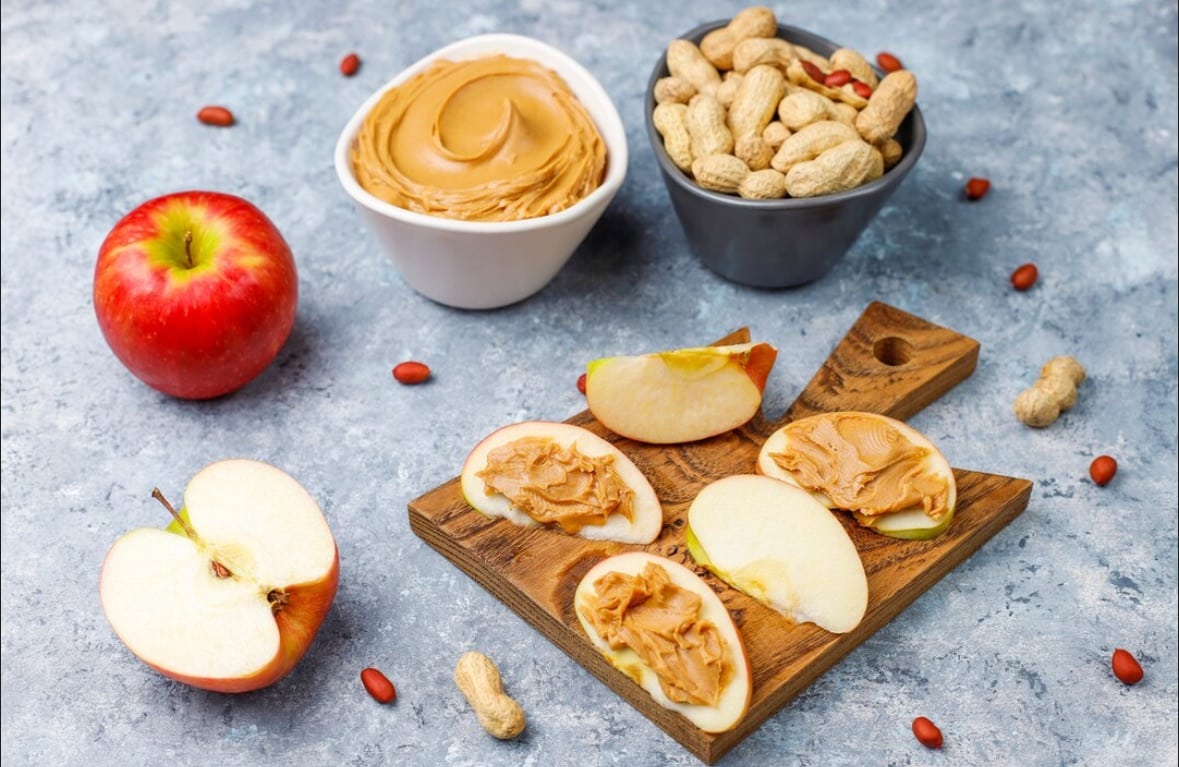
Apple slices with almond butter
This snack blends the fibre of apples with the healthy fats of almond butter for a naturally low-GI combo. It gives a slow, steady energy release and curbs sugar cravings without causing a spike in blood glucose.
If you want something sweet yet satisfying, this combo is a dream.
Ingredients:
- 1 medium apple, sliced
- 1 tablespoon almond butter
Recipe:
- Slice the apple into thin wedges using a sharp, clean knife.
- Spread almond butter evenly on each apple slice’s surface.
- Arrange neatly on a plate for a picture-perfect presentation.
- Serve immediately for maximum freshness, flavour, and crunch.
8. Plain Yoghurt with Fresh Berries – Gut-Friendly & Sweetly Satisfying
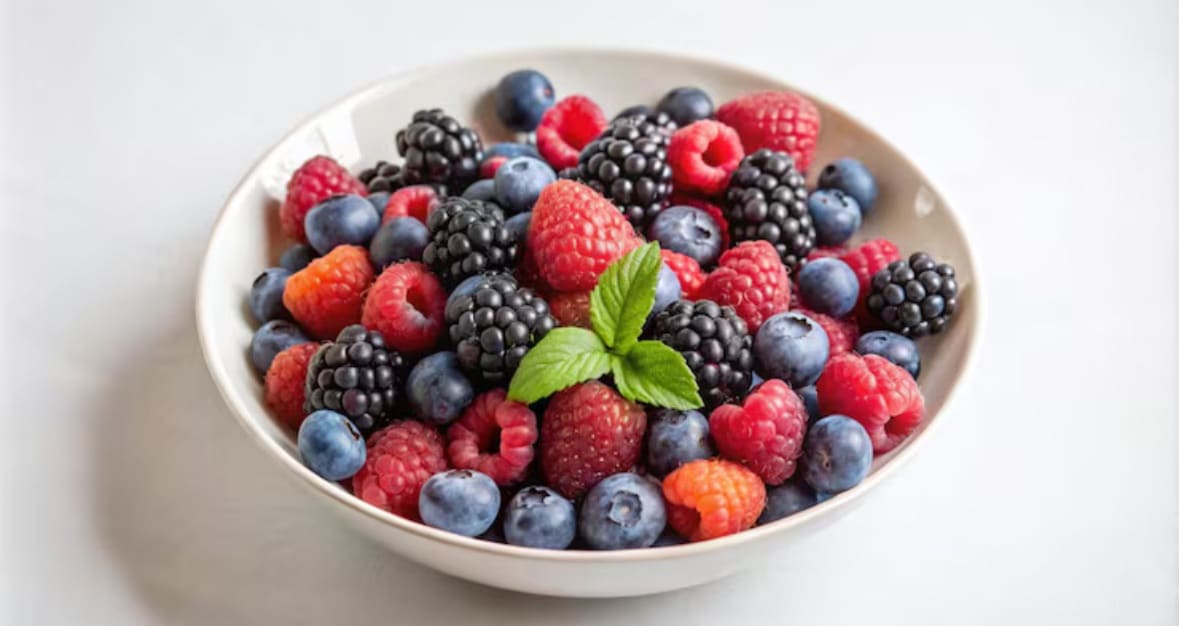
Plain yoghurt with berries
Plain yoghurt with berries is creamy, probiotic-rich, and naturally low on the glycemic index, making it ideal for stable energy and better digestion. The antioxidants in berries also support brain and heart health.
If you like sweet snacks that don’t derail your diet, this is your perfect pick.
Ingredients:
- ½ cup plain yoghurt
- ¼ cup fresh berries
- ½ teaspoon chia seeds
Recipe:
- Add yoghurt to a glass bowl and smooth its surface gently.
- Top with fresh berries for natural sweetness and antioxidants.
- Sprinkle chia seeds evenly for added fibre and texture.
- Chill before serving for a light, refreshing treat anytime.
9. Hard-Boiled Eggs with Whole-Grain Crackers – Protein Meets Crunch
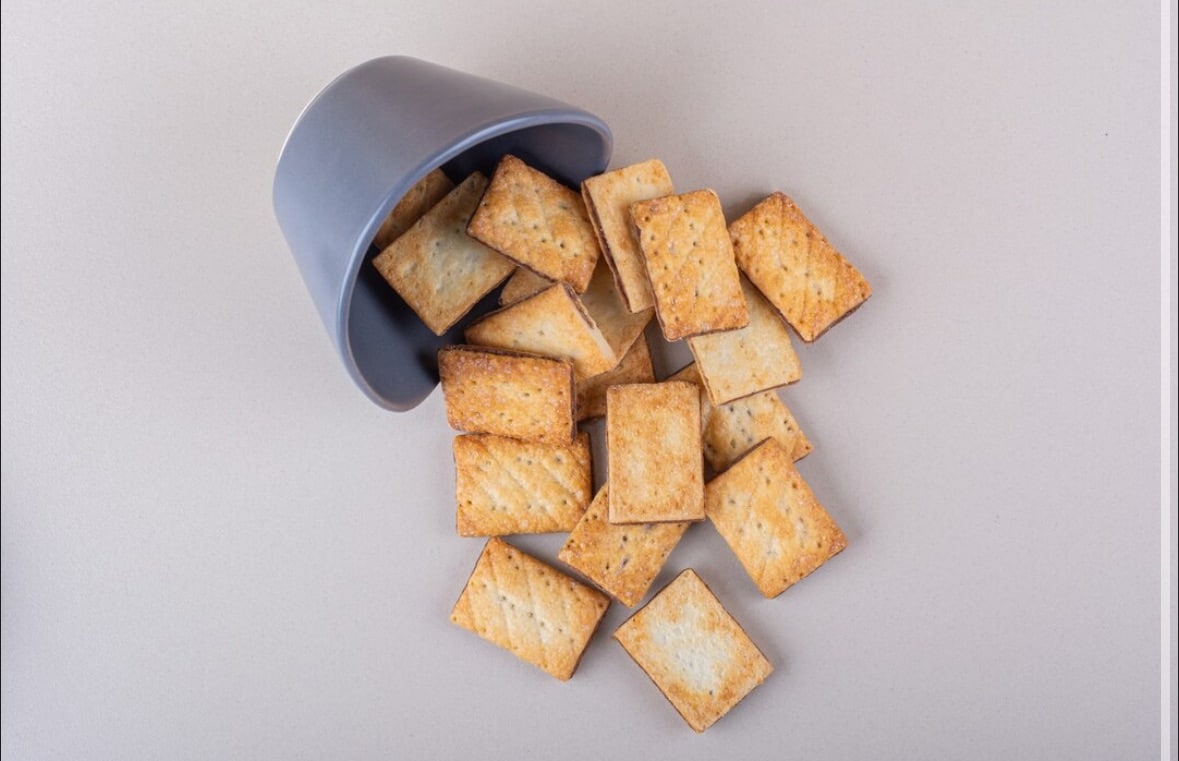
Whole grain crackers
This balanced pairing of eggs and whole-grain crackers makes a low-GI snack that satisfies and fuels you longer. The combination of protein, complex carbs, and healthy fats prevents sugar dips and evening munchies.
If you want something crunchy yet filling, this one’s perfect.
Ingredients:
- 1 hard-boiled egg, sliced
- 4-5 whole-grain crackers
- Pepper or chilli flakes (optional)
Recipe:
- Slice boiled egg carefully into even, neat circular rounds.
- Arrange slices over crackers for a balanced mini-meal.
- Sprinkle lightly with pepper or herbs for extra flavour.
- Serve immediately as a quick, satisfying snack plate.
10. Cheese and Vegetable Roll-Ups – Savoury, Fun, and Protein-Packed
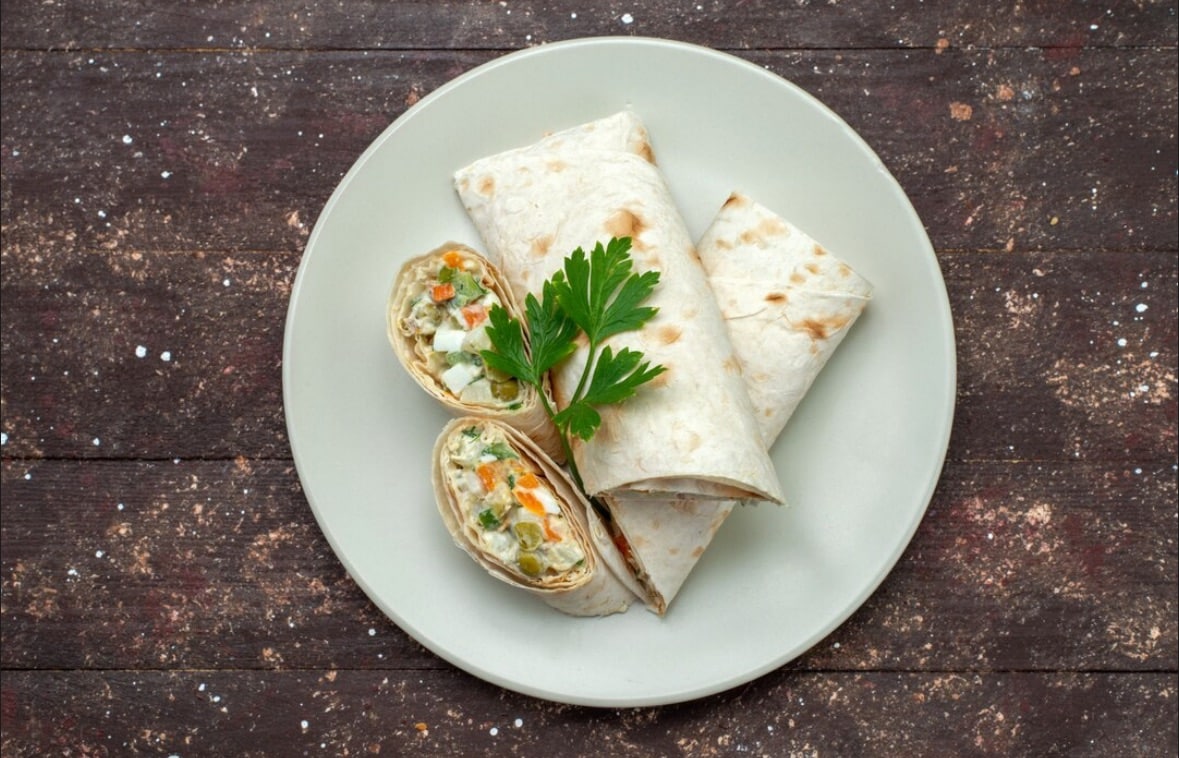
Cheese and veggies roll ups
Cheese and veggie roll-ups are rich in protein, calcium, and fibre. Their ingredients are low on the glycemic index, helping you stay satisfied and avoid sugar spikes. They’re delicious, quick to make, and fun to eat.
If you’re looking for something easy, savoury, and wholesome, this one’s a winner.
Ingredients:
- 2 cheese slices
- ¼ bell pepper, sliced thin
- ¼ cucumber, julienned
- Black pepper or herbs
Recipe:
- Lay cheese slices flat and arrange veggies neatly inside.
- Roll carefully to keep vegetables enclosed and compact.
- Secure each roll-up with a small toothpick for stability.
- Sprinkle herbs or pepper for garnish before serving chilled.
11. Homemade Trail Mix – Crunchy, Nutty, and Nutrient-Dense
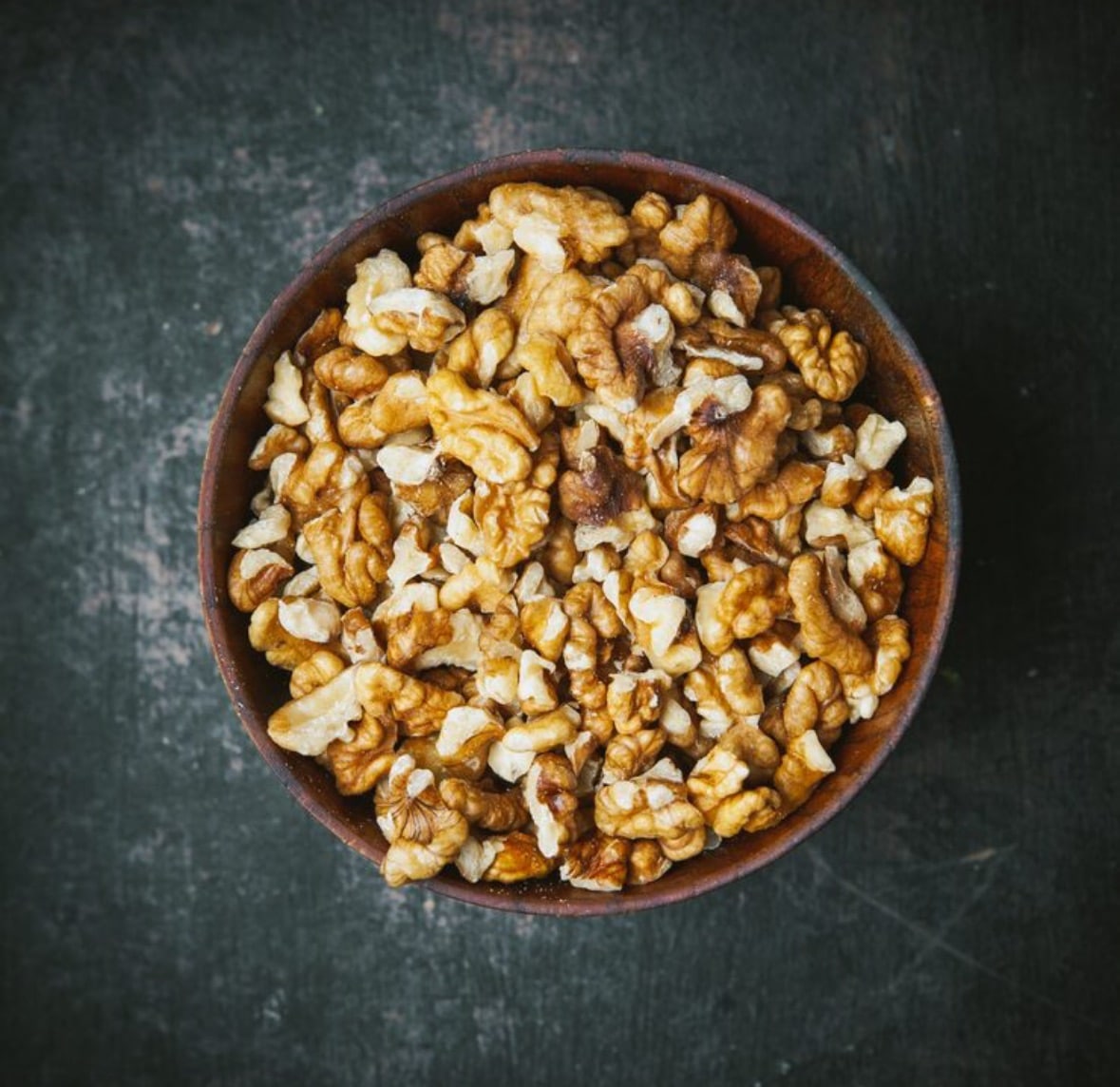
Homemade crunchy trail mix
This homemade trail mix is full of healthy fats, fibre, and minerals, and since all the ingredients are low-GI, it provides slow, steady energy. It’s perfect for keeping cravings at bay while supporting heart and brain health.
If you want something portable and nourishing with amazing health benefits, this snack’s for you.
Ingredients:
- 1 tablespoon almonds
- 1 tablespoon walnuts
- 1 tablespoon sunflower seeds
- 1 tablespoon pumpkin seeds
Recipe:
- Combine all ingredients evenly in a large mixing bowl.
- Toss gently to mix textures and distribute flavours perfectly.
- Store in an airtight jar to retain crispness and freshness.
- Enjoy a small handful whenever hunger or cravings strike.
What’s the Best Way to Eat Low GI Fruits?
To get the most benefits from low-GI fruits, keep these tips in mind:
- Go for whole fruits instead of juice: they’re packed with fiber, prevent sugar spikes, and provide steady energy, helping you feel fuller for longer.
- Watch portion sizes: even low-GI fruits have natural sugars, so stick to one serving such as an apple or a cup of berries to keep calories and blood sugar in check.
- Pair fruits with protein or healthy fats: combining them with nuts, Greek yogurt, or cheese slows digestion and balances blood sugar, keeping energy levels stable.
- Check the ripeness: less ripe fruits usually have a lower GI, while overripe ones contain more sugar, making just-ripe fruits a smarter everyday choice.
Love dessert, but cutting sugar? Discover these delicious sugar-free Christmas dessert recipes that still feel festive.
How Should You Prepare Low GI Vegetables?
If you’re managing diabetes, non-starchy vegetables are some of the best foods you can add to your meals since they’re naturally low in glycemic impact and can be enjoyed freely. These low glycemic fruits and vegetables for diabetics also make excellent bases for quick, healthy snacks. Here’s how you can prepare them for maximum benefit:
Best Cooking Methods:
These preparation techniques help maintain the low glycaemic index benefits of vegetables:
- Raw – Lowest GI impact, perfect for salads and snacks
- Steaming – Preserves nutrients and keeps GI low
- Grilling – Adds flavour without raising GI
- Stir-frying – Quick cooking maintains structure
- Light sautéing – Use minimal healthy oils
Avoid These Preparation Methods:
These cooking techniques can reduce the benefits of low-GI vegetables:
- Overcooking (breaks down structure and raises GI)
- Deep frying (adds unhealthy fats)
- Adding sugary sauces or dressings
What Does a Day of Low GI Meals Look Like?
Here are practical meal examples featuring low glycemic index ingredients:
Sample Daily Menu:
Planning your meals around the right foods can make blood sugar management much easier. This sample meal plan shows how low glycemic index foods for diabetics can fit into your day from breakfast to dinner:
Breakfast
Start your day with steady energy: steel-cut oatmeal topped with berries, or Greek yoghurt with nuts and apple slices. You can also try oats idli, a high-fibre, low-GI twist on the traditional South Indian breakfast.
Mid-Morning Snack
Opt for light but filling snacks like a salad with grilled chicken and chickpeas or a warm lentil soup with a whole-grain roll. Tarka dal is another great choice, a protein-packed, fibre-rich lentil curry that works perfectly as a snack or side.
Lunch
Choose balanced plates such as a chickpea-loaded salad with olive oil vinaigrette or a lentil soup paired with whole grains. Dal in coconut milk is another satisfying option, creamy yet healthy, and pairs beautifully with brown rice or millet.
Afternoon Snack
For a refreshing snack, raw vegetables with hummus work wonders. They’re crunchy, satisfying, and perfect for blood sugar stability. If you prefer something warm, spicy oats kozhukattai makes a savoury, low-GI alternative.
Dinner
Wrap up the day with nutrient-dense meals like baked salmon with green beans and quinoa, or grilled chicken with roasted vegetables and barley. Fish in yoghurt is another excellent dinner choice, protein-rich, flavorful, and diabetes-friendly.
Conclusion
Incorporating low glycemic index foods and reducing high glycemic index foods into your diet can play an important role in managing diabetes effectively. By understanding the glycemic index and selecting foods that keep blood sugar levels stable, you empower yourself to make healthier dietary choices.
Remember, it’s not just about what you eat but how you pair and prepare your meals as part of a healthy diet. With a wide variety of low-GI fruits and vegetables available, you can enjoy delicious meals while maintaining your health.
Frequently Asked Questions
What makes a food low or high on the glycemic index scale?
A food’s GI value depends on how quickly its carbohydrates raise blood sugar. Low GI foods have slow digestion, often due to high fibre content. High GI foods are typically more processed, causing rapid sugar release.
Can a diabetic have too many low glycemic index foods?
Yes, diabetics can overeat even low-GI foods, leading to excess calories and weight gain, which negatively affects blood sugar control and overall health outcomes. Balance and portion control are essential. A diet rich in variety, moderation, and nutrients supports effective diabetes management long-term.
Why are low glycemic index foods important for diabetics?
Low glycemic index foods release glucose slowly into the bloodstream, preventing sudden spikes and crashes. For diabetics, this supports stable blood sugar levels, reduces risks of complications, and enhances energy balance. They’re an important foundation of a sustainable diabetes-friendly eating plan.
How can low glycemic index foods help manage or prevent diabetes?
By slowing digestion and stabilising blood sugar, low GI foods reduce insulin resistance and prevent glucose overload, consequently leading to improved total cholesterol levels. For diabetics, they improve control, while for non-diabetics, they lower the risk of developing diabetes, supporting long-term metabolic health and wellness.
What are some surprisingly low GI foods?
Some surprisingly low GI foods include pasta made from durum wheat, sweet potatoes, chickpeas, lentils, and even certain fruits like cherries, pears, and apples. These foods digest slowly, offering steady energy and making them excellent options for people managing diabetes daily.
What are the best low glycemic foods for diabetics?
The best low glycemic foods for diabetics include oats, quinoa, lentils, chickpeas, apples, pears, leafy greens, pumpkin seeds, carrots, and non-starchy vegetables. These choices provide fibre, protein, and nutrients while stabilising blood sugar. Pairing them with lean proteins further improves glycemic control.
What should a low glycemic index diet consist of?
A low glycemic index diet should consist mainly of whole wheat, legumes, fresh fruits, non-starchy vegetables, nuts, seeds, and lean proteins. These foods help maintain stable blood sugar levels, which is particularly important for individuals managing high blood sugar, aid digestion, and improve overall health when balanced with regular exercise routines.
What constitutes a low glycemic index?
A food is considered low glycemic index if it has a GI value of 55 or less. This means it digests slowly, causing gradual rises in blood sugar. Medium GI foods range 56 to 69, while high GI is 70 or above.
Which food is zero glycemic index?
Foods without carbohydrates have a glycemic index of zero. Examples include meats, poultry, fish, eggs, and most oils. Since they don’t raise blood glucose, they’re GI-free, though they should be consumed alongside fibre-rich foods for balanced diabetic nutrition.
Should diabetics have food with low glycemic index?
Yes, diabetics should prioritise low glycemic index foods as part of their daily meals. These foods prevent sharp blood sugar spikes, reduce strain on insulin response, and lower risks of complications. They’re essential for effective blood sugar management and long-term health.





